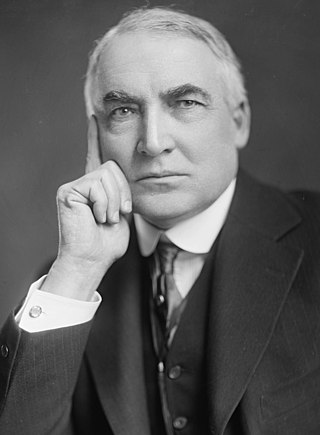
Presidential elections were held in the United States on November 2, 1920. Republican senator Warren G. Harding of Ohio defeated Democratic governor James M. Cox of Ohio. It was the first election held after the end of the First World War, and the first election after the ratification of the Nineteenth Amendment which gave equal votes to men and women. It was the third presidential election in which both major party candidates were registered in the same home state, and the last time that the state was not New York. It was the first presidential election to have its results broadcast by radio. Coincidentally, the election was held on Harding's 55th birthday.

Presidential elections were held in the United States on November 4, 1924. Incumbent Republican President Calvin Coolidge won election to a full term. Coolidge was the second vice president, after Theodore Roosevelt, to ascend to the presidency and then win a full term.

James Middleton Cox was an American businessman and politician who served as the 46th and 48th governor of Ohio, and a two-term U.S. Representative from Ohio. As the Democratic nominee for President of the United States at the 1920 presidential election, he lost in a landslide to fellow Ohioan Warren G. Harding. His running mate was future president Franklin D. Roosevelt. He founded the chain of newspapers that continues today as Cox Enterprises, a media conglomerate.
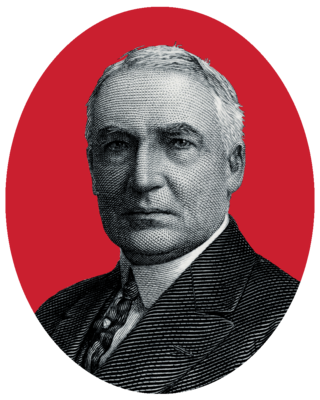
The 1920 Republican National Convention nominated Ohio Senator Warren G. Harding for president and Massachusetts Governor Calvin Coolidge for vice president. The convention was held in Chicago, Illinois, at the Chicago Coliseum from June 8 to June 12, 1920, with 940 delegates. Under convention rules, a majority plus one, or at least 471 of the 940 delegates, was necessary for a nomination.

Frank Bartlett Willis was an American politician and lawyer. He was a Republican from Ohio. He served as the 47th governor of Ohio from 1915 to 1917, then served as a U.S. Senator from Ohio from 1921 until his death in 1928.

The 69th United States Congress was a meeting of the legislative branch of the United States federal government, consisting of the United States Senate and the United States House of Representatives. It met in Washington, D.C. from March 4, 1925, to March 4, 1927, during the third and fourth years of Calvin Coolidge's presidency. The apportionment of seats in the House of Representatives was based on the 1910 United States census.

The 65th United States Congress was a meeting of the legislative branch of the United States federal government, composed of the United States Senate and the United States House of Representatives. It met in Washington, D.C., from March 4, 1917, to March 4, 1919, during the fifth and sixth years of Woodrow Wilson's presidency. The apportionment of seats in this House of Representatives was based on the 1910 United States census.

The 1928 Republican National Convention was held at Convention Hall in Kansas City, Missouri, from June 12 to June 15, 1928.
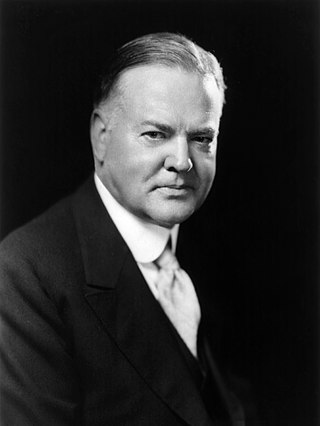
Electoral history of Herbert Hoover, who served as the 31st president of the United States (1929–1933) and 3rd United States Secretary of Commerce (1921–1928).

The 1920 United States elections was held on November 2. In the aftermath of World War I, the Republican Party re-established the dominant position it lost in the 1910 and 1912 elections. This was the first election after the ratification of the 19th Amendment, which granted women the constitutional right to vote.

The 1920 United States Senate special election in Ohio was held on November 2, 1920. Incumbent Republican Senator Warren G. Harding did not run for re-election, opting instead to run for President of the United States. Republican Governor Frank B. Willis defeated William Alexander Julian in the race for the open seat.

The 1918 United States Senate election in Minnesota took place on November 5, 1918. It was the first election for Minnesota's Class 2 seat in the United States Senate, and the second U.S. Senate election in Minnesota overall, held after the ratification of the Seventeenth Amendment to the United States Constitution, which established the popular election of United States Senators. Incumbent U.S. Senator Knute Nelson of the Republican Party of Minnesota easily defeated his challenger in the general election, Willis Greenleaf Calderwood of the National Party, to win a fourth term in the Senate.

The 1920 United States presidential election in Minnesota took place on November 2, 1920, as part of the 1920 United States presidential election in which all contemporary forty-eight states participated. Voters chose 12 electors, or representatives to the Electoral College, who voted for president and vice president. This election marks the last time a candidate for president won every county in Minnesota.
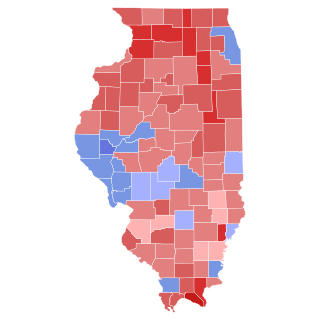
The 1918 United States Senate election in Illinois took place on November 5, 1918.
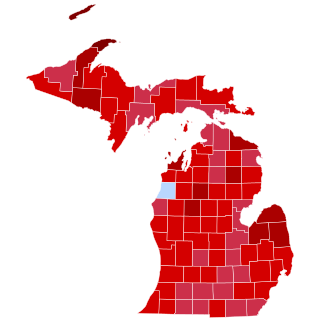
The 1920 United States presidential election in Michigan took place on November 2, 1920, as part of the 1920 United States presidential election. Voters chose 15 representatives, or electors, to the Electoral College, who voted for president and vice president.

The 1920 United States presidential election in Kansas was held on November 2, 1920, as part of the 1920 United States presidential election. Kansas voters chose ten electors to the Electoral College, who voted for president and vice president. Kansas voted for the Republican nominee, Ohio Senator Warren G. Harding, over the Democratic nominee, Ohio Governor James M. Cox. Harding ran with Massachusetts Governor Calvin Coolidge, while Cox ran with Assistant Secretary of the Navy Franklin D. Roosevelt of New York.

The 1916 Ohio gubernatorial election was held on November 7, 1916. Democratic nominee James M. Cox defeated incumbent Republican Frank B. Willis in a rematch of the 1914 election with 48.40% of the vote.

The 1914 Ohio gubernatorial election was held on November 3, 1914. Republican nominee Frank B. Willis defeated incumbent Democratic governor James M. Cox and Progressive nominee James Rudolph Garfield with 46.32% of the vote.

The 1912 Ohio gubernatorial election was held on November 5, 1912. Democratic nominee James M. Cox defeated Republican nominee Robert B. Brown with 42.38% of the vote.

A general election was held in the U.S. state of Wyoming on Tuesday, November 5, 1918. All of the state's executive officers—the Governor, Secretary of State, Auditor, Treasurer, and Superintendent of Public Instruction—were up for election. Republicans won all statewide offices by wide margins, and with Robert D. Carey's defeat of Frank L. Houx, picked up the governorship following two consecutive losses to Democrats.






















